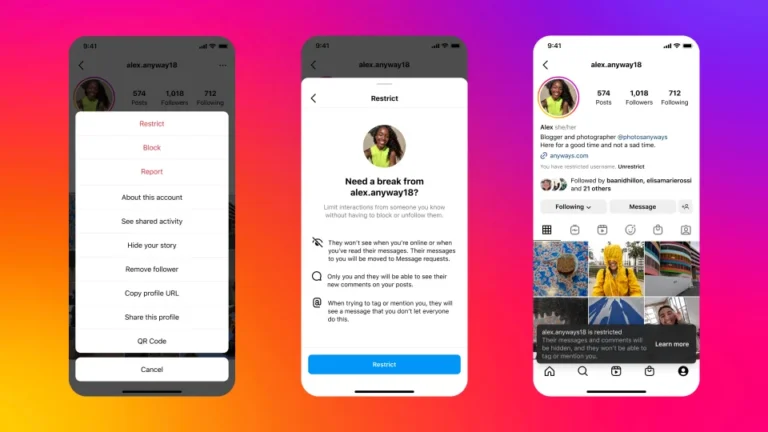Increasing the power of the “limit” and “restrict” functions of the app is currently being done.
Two of Instagram’s safety measures are being expanded as part of the company’s efforts to strengthen its protections against bullying for adolescents. In an effort to provide adolescents with methods of dealing with prospective bullies that, according to the firm, are less likely to result in additional retaliation, the company is modifying the way that limiting and restricting function within its app.
Following the implementation of these changes, Instagram users will have the choice to restrict the interactions they have with their posts to only “close friends.” From this point on, users will only be able to view comments, direct messages, tags, and mentions from those who are on their list of close friends. It will still be possible for other followers to interact with their postings; but, the comments and messages that their followers leave will not be accessible to other followers.
The business had previously implemented comment restricting as a creator-focused anti-bullying tool in 2021 with the intention of preventing the kind of unexpected torrent of harassment that was experienced by a number of football stars in the United Kingdom. According to Instagram, the most recent modifications are aimed primarily at adolescents who are dealing with bullies, but who may be reluctant to utilize the app’s block option owing to concerns that it could escalate possible conflicts.
The “restrict” option on Instagram is undergoing similar modifications in order to accommodate situations in which users may be dealing with a single bully exclusive to them. It will be possible for users to prevent restricted individuals from tagging or mentioning them without their permission. Additionally, comments made by individuals who are on the restricted list will be automatically concealed from other users.
At the same time as Meta is being scrutinized for its handling of teen safety and other issues, the changes have been released. There were dozens of states that filed lawsuits against the corporation in the previous year, alleging that it failed to protect its younger users from potentially hazardous features of its service.

